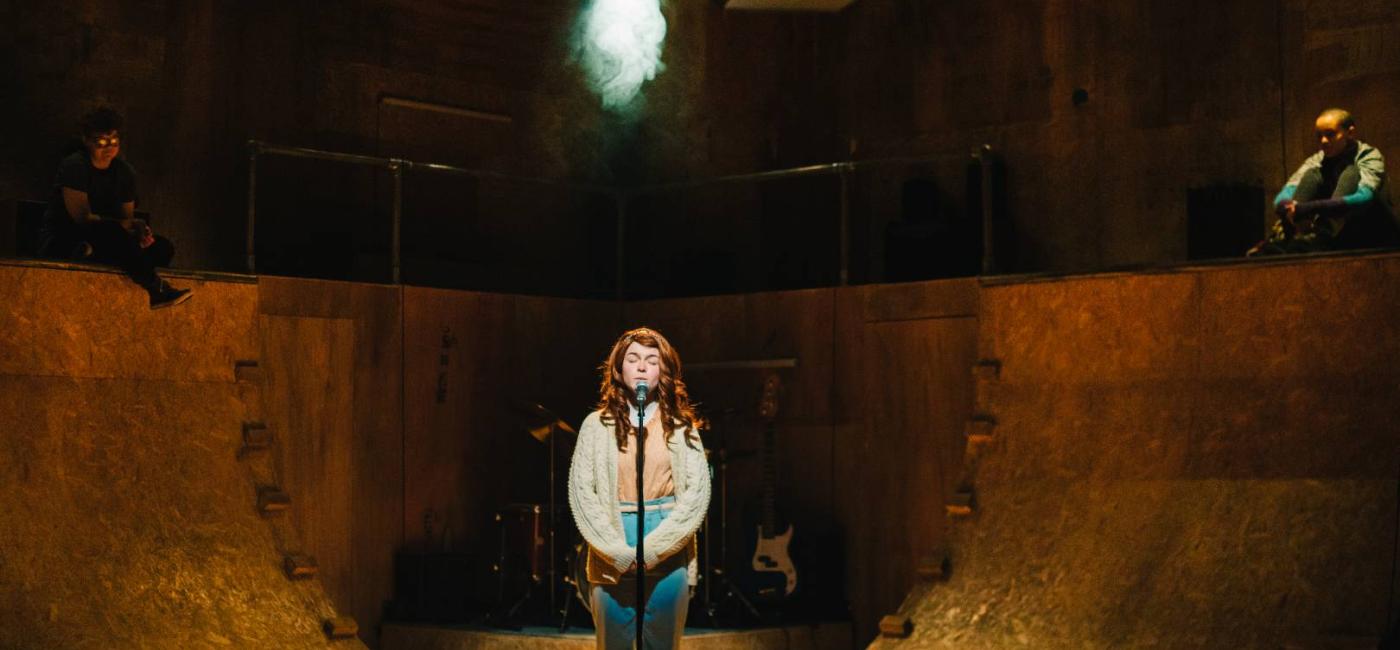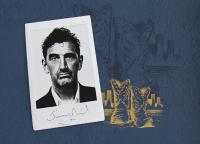How We Made We Are The Best!

How we made We Are The Best!
Jack McNamara Directors blog – Part 1 Writing, Casting and Design
We Are The Best! has been a whirlwind to say the least. My first ever show at Live Theatre and first full production since the pandemic hit. Plus its creation happened to run in parallel to our Arts Council NPO application being prepared and submitted, whilst also signing off my first season of programmed work for Live. And I have three kids. In short, I can already see the joyful memory of making this production disappearing into a fog. And so here I attempt to document how we got here and what tiny steps were involved in making this production what it is today.
Script
I had been granted the rights to stage the world premiere of We Are The Best!, a much loved film by Swedish director Lukas Moodysson, based on his wife Coco’s astonishing graphic novel Never Goodnight. I had a strong instinct that this story and its world would make a great show and usually my hunches to that effect have been right (I have adapted all kinds of weird wonders in the past). This one was clearly going to be challenging. The story doesn’t follow an obviously dramatic curve. There are no real villains and no one dies. But it also wasn’t one of those crass coming of age tales, where people go through something terrible and emerge more ‘mature’ than they were. The story was focussed on the exact moment of personal teenage liberation. There is little room here for boring adult problems. It was about tapping into a unique energy, of friendship or music, when the rest of the world starts to try and drain you of that energy.
My first problem was to work out who should adapt it for us. I needed someone who would get the punk world of it, but also that sense of younger friendships. The three teenage voices had to be totally real. I wanted someone early in their career but also relatively undaunted by the prospect of writing a two act show with a lot going on. This was no chamber piece. I met Rebecca Glendenning casually for a coffee and we started talking about punk. She was part of a brilliant drag group, then called Bonnie and the Bonnettes. The fact she came from the drag world encouraged me – this was never going to be a script written by someone whose sense of writing was desk bound. Becky was a performer as well and had a sharp sense of comedy. I knew these would be good things for what I had in mind for the script, which was going to be form-pushing and subversive. Also there is nothing worse than punk made by people who don’t quite get punk and Becky got it. But still, I was taking a punt. We’d met only once and I’d only read a handful of their (very good) shorter scripts to date.
I remembered how early in my career it felt like you had to jump through a hundred hoops before anyone trusted you with anything. Certain theatres expected you to assist on several shows then fund your own studio works and even THEN you were considered too high risk to take on. I always hated the arrogance of that. Of course you have to be smart about your choices but I also think that taking risks on people is what I am here to do. So once a handful of people corroborated that Becky was a serious talent to watch I made my decision.
We met and discussed the structure, tone and general approach. And then she was left to it. There were a few weeks when I didn’t hear much from them, and began to bite my nails a little. And then a script arrived. A full blown 120 pages. Wow. It was so fully formed and ran along at lightning speed. Very different from most first drafts I read. I could see that Becky had a total handle on this material. And so now we could go even further. I sent a page or so of notes, less about improving things and more about pushing them. A few outlandish suggestions (such as replacing real people with card board cut outs wheeled onto the stage) that most writers might have baulked at, Becky took on with relish. She had the generosity and courage to absorb any note, however far-fetched, and still always made the work their own. She did the same throughout rehearsals and even tech, rewriting lines whenever actors needed them. She understood that the script was just the start, that words are live and that a production becomes its own beast very quickly, a thousand miles from the crisp layout of a printed page.
Casting
Casting this production was just as a big a challenge. We would need three young actors to lead the show who were as close in age possible to the three teenage protagonists. We decided early that it was not going to be a case of adult actors playing younger – that felt a perilous route. So we began our search, with our casting directors Sooki McShane and Lucy Jenkins, for teenage actors who could carry an entire show together. Over the course of a number of months we saw many exceptional young people both in person and over zoom. But three stood out as our clear leads; Bethany Morris, Elena Porter and Bridget Marumo. We saw them individually first and then brought them together. As soon as they read a scene together as friends, Becky and I thought, ’that’s it.’ Their dynamic was ready made. We had our cast.
We then found out that none of these three actors had performed professionally on the stage before. While for some this may have felt like too big a risk for a season opener, for us it felt perfect. We Are The Best! is about young people taking centre stage. These three actors weren’t just right for their parts, they were their parts. The show wouldn’t just be about teenage autonomy and creative expression, it would be the thing itself. This suddenly felt much more valuable than having the security of actors with heaps of stage experience. You have to begin somewhere and they were going to begin here. What a massive honour for us at Live that would be.
Having secured our three young leads we needed three older actors to multi role (I say older, but we are talking 30s-40s here). I have staged a lot of multi role shows – it’s part of the bread and butter of small-scale touring - and I know that to do it effectively you need seriously good performers. We went on our search, intent on ensuring that our entire cast would be from the North East. So many incredible people walked through the door, people that I hope to work with many times in the future. But Stacey Ghent, Beruce Khan and Anna Bolton felt like an immediate family. Each with deep intelligence, courage and a lack of ego. And also funny as all hell, in a gloriously dry Scandinavian way. For an ensemble like that you need actors who were willing to keep trying new things and push possibilities, whilst always retaining something real at the centre. From Beruce agreeing to play his most emotional character with a cardboard box on his head, through Anna bleating like a goat mid-scene to Stacey fulfilling a lifelong ambition of playing a misogynist Santa Claus, these are not actors who put themselves first. Together this cast of six made for a rehearsal room in which everyone became a creative force.
Design
I have worked with designer Lily Arnold many times before. We met as assistants at the RSC ten years ago, where we collaborated on a somewhat fraught schools tour of Taming of the Shrew. The visual quality of her work is always totally outstanding. But our working relationship is about a lot more than how things look. There's a deep dramaturgic process we go through, somewhat gruelling, in which everything is pulled apart, like we are trying to declutter and get to the heart of what is inside the piece pf work. We’re not looking for a space that either serves or decorates the story. Instead it needs to articulate something unsayable that is key to the whole work, something that opens the whole thing up in unexpected ways. The quest is basically to find the perfect design. I could only really do this with someone willing to go through the hard slog. Lily created whole model boxes that we agonised over and threw out. We went through ideas for a space that was largely cinematic (a rectangle centre stage that all the action was framed within) to things that were totally abstract (large Ikea like blocks). The only constant was that we knew we wanted to use height as much as we could. We began to come to the idea that the space had to belong to the three teenagers and be in their mould. But too much mess would also be a burden (the problem with mess onstage is that unless you waste time clearing it up you are stuck with it). Finally we hit a revelation – two massive curved ramps on either side of a riser for a drumkit. The shape of these curves opening up before the audience, the whoosh of them, captured exactly the emotion we needed. And also, it would be a very tricky but exciting space for the actors to try and work with. There would be no room for chairs or tables (two things I dislike onstage anyway). It would all have to be done through a negotiation of people and these strange epic curves. Lily redrafted and redesigned. Boom. There it was.
Next: Part two Rehearsals, production and opening COMING SOON!



